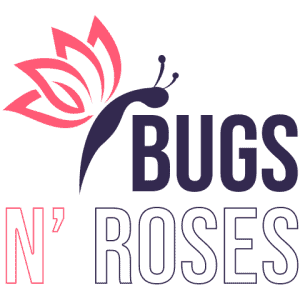Butterflies are beautiful, delicate creatures that come in a wide variety of shapes and colors. From tiny blues to magnificent monarchs, these flying gems can be spotted near fields and flowerbeds or even just passing through your backyard.
Three of the most common types of butterflies species are the Monarch, Swallowtail, and Cabbage White. The Monarch flaunts its brilliant orange wings adorned with black stripes. Meanwhile, gracefully-long tails that extend from their hindwings characterize the elegant Swallowtails. Last but not least is the common Cabbage White: a white-winged beauty speckled with black spots near its edges found frequently in America’s backyard gardens!
In addition to the Monarch, Swallowtail, and Cabbage White butterflies soaring through our skies, there are many other popular species of winged beauties found worldwide. In this article we will uncover some of these common types that often inhabit gardens, parks and meadows around the globe.
Monarch (Danaus plexippus)

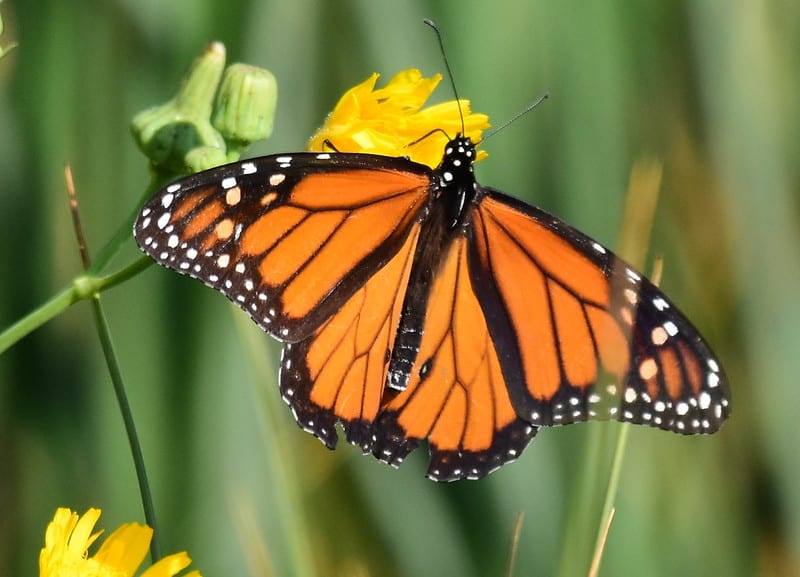
Main Characteristics
Monarch butterflies are usually conspicuous and large, boasting bright orange wings which are encompassed by a black border filled with dark veins. Additionally, male monarchs display two distinct black spots in the middle of their hind wings. Depending on the species, there may be subtle differences in physical characteristics.
Each year, Monarch butterflies embark on an awe-inspiring journey from the United States and Canada to Mexico. This remarkable annual migration attracts admirers all over the world and is especially impressive considering it must be completed by successive generations of butterflies.
| Binomial Name | Danaus plexippus |
| Family | Nymphalidae family |
| Wingspan | 3.5 to 4 inches |
| Habitat | meadows, fields, and roadsides |
| Host Plant | milkweed (Asclepias spp.) |
Eastern Tiger Swallowtail (Papilio glaucus)
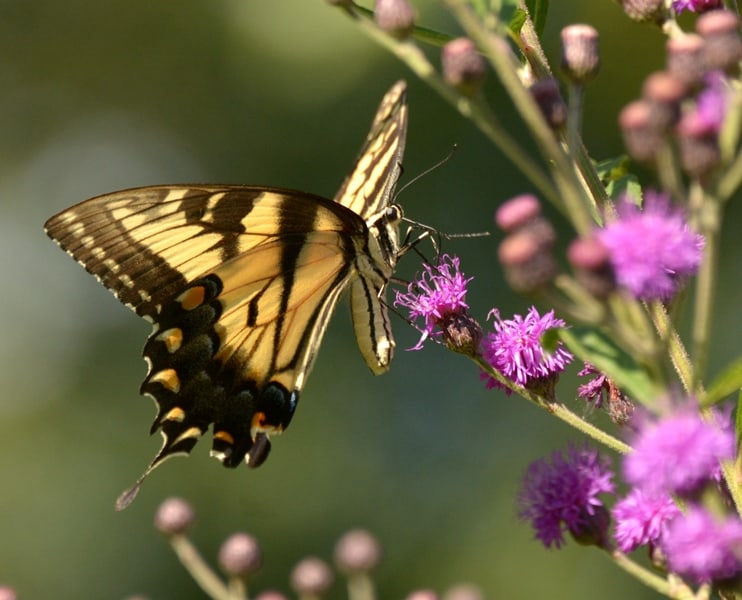
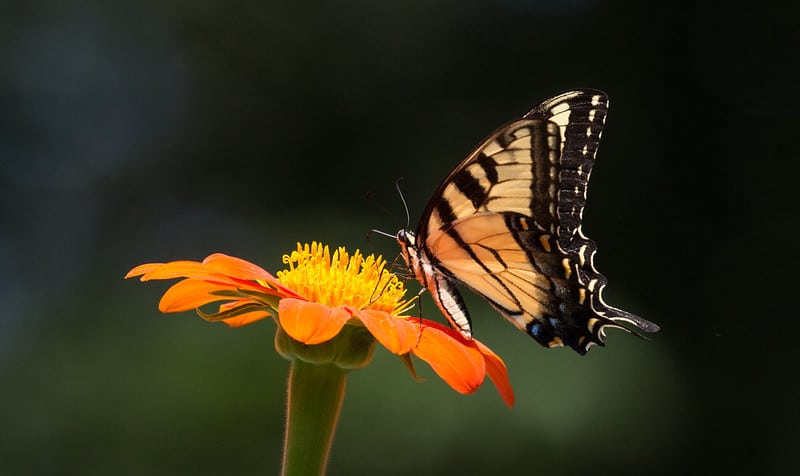
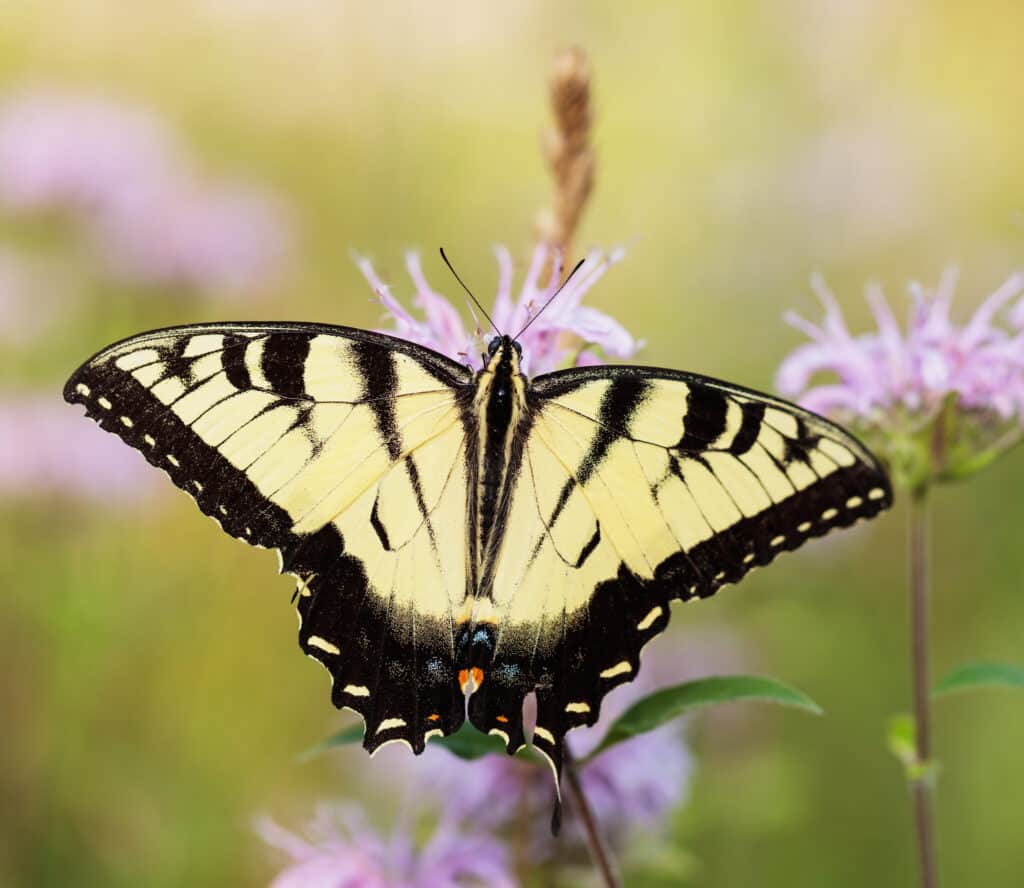
Main Characteristics
The Eastern Tiger Swallowtail (Papilio glaucus) is a beautiful and large butterfly native to eastern North America. It is one of the most recognizable butterflies in the United States, easily identified by its black “tiger stripes” on its yellow wings.
They prefer areas with trees such as oak-hickory forests or mixed hardwood forests but can also be found in open areas with scattered trees or shrubs.
These butterflies are seen from spring to fall in most parts of their range and have multiple generations each year depending on the climate they inhabit. They are also the state butterfly of Alabama, Delaware, Georgia and South Carolina!
| Binomial Name | Papilio glaucus |
| Family | Papilionidae |
| Wingspan | 3.12 to 5.5 inches |
| Habitat | woodlands, fields, meadows, gardens, and along roadsides |
| Host Plant | wild cherry, tulip tree, ash, birch, cottonwood and willow trees |
Black Swallowtail (Papilio polyxenes)
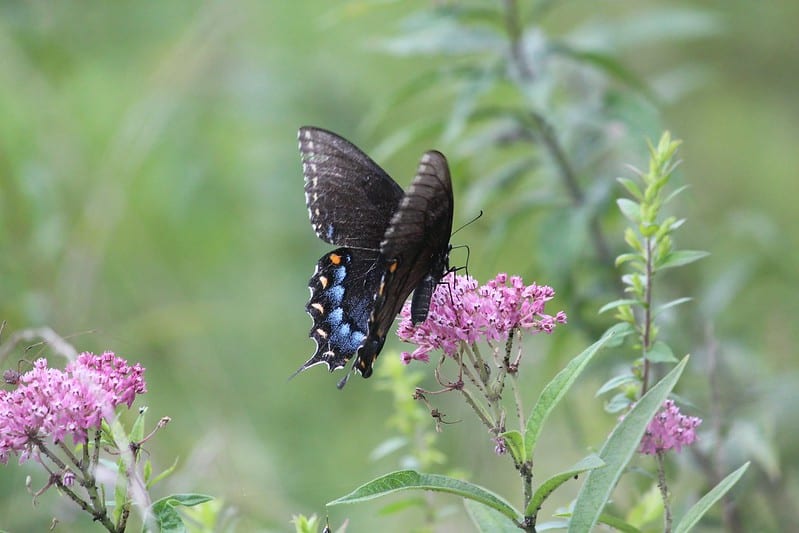
Main Characteristics
The Black Swallowtail (Papilio polyxenes) is a mesmerizing butterfly that can be spotted throughout North America. Its wings feature striking yellow and blue patterns, both in males and females; nonetheless, the hues are more pronounced on the male’s wings compared to its female counterpart.
The life cycle of the Black Swallowtail begins when an adult female lays her eggs on plants such as parsley, dill, fennel, carrots, and rue. When these eggs hatch into caterpillars they are green with black stripes and have a pair of horns on their heads. As they grow older they become darker in color until they eventually form a chrysalis or pupa before emerging as an adult butterfly.
| Binomial Name | Papilio polyxenes |
| Family | Papilionidae |
| Wingspan | 2.75 to 4 inches |
| Habitat | open fields, farmlands, and urban landscapes |
| Host Plant | Parsley, dill, fennel, Queen Anne’s lace, and rue |
Cabbage White (Pieris rapae)
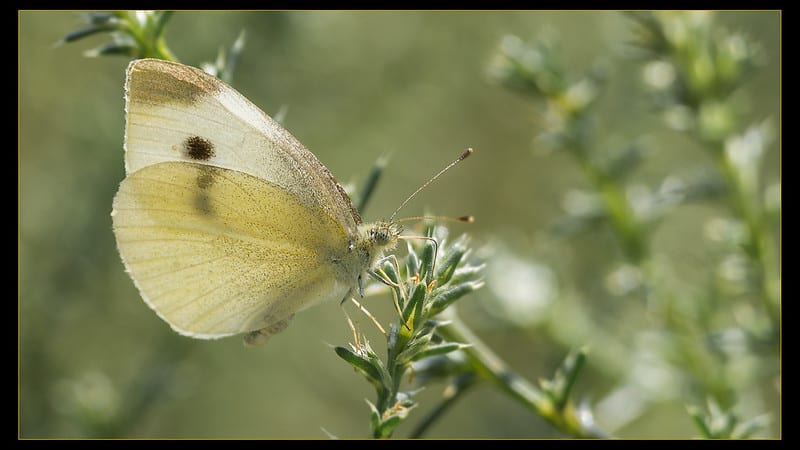
Main Characteristics
The Cabbage White (Pieris rapae) is a species of butterfly belonging to the Pieridae family. The small white butterfly, also known as the cabbage white or cabbage butterfly in North America and Europe respectively, is a species of insect celebrated throughout various continents.
The upperside of the wings is usually white or pale yellowish-white with black tips on the forewing while females have two black spots and males have one spot on each wing. This species is also able to extract nectar from Epilobium flowers which makes them unique among butterflies.
| Binomial Name | Pieris rapae |
| Family | Pieridae |
| Wingspan | 1.25 to 2 inches |
| Habitat | meadows, gardens, fields, and roadsides |
| Host Plant | Cabbages, broccoli, cauliflower, kale and other cruciferous vegetables |
Painted lady (Vanessa cardui)
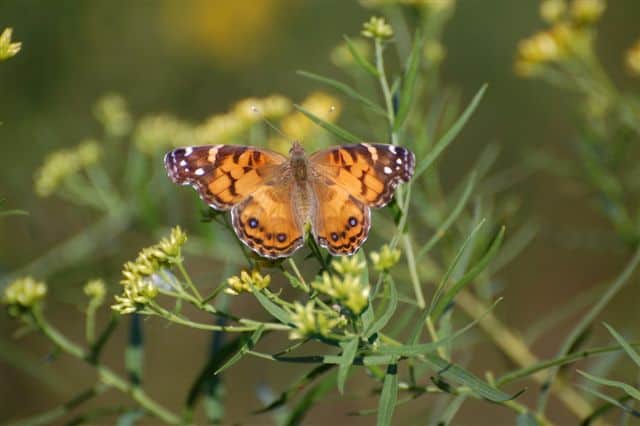
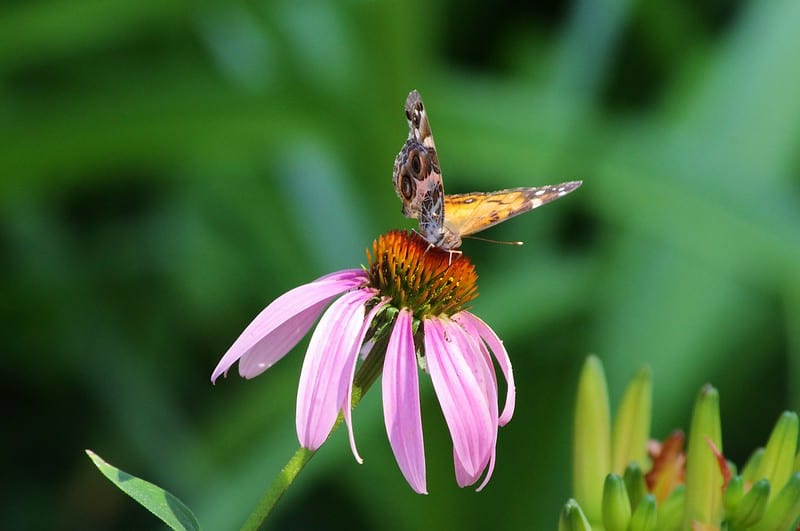
Main Characteristics
The captivating Painted Lady (Vanessa cardui) is a species of butterfly that’s hard to miss. Its awe-inspiring wingspan can span up to two inches with its vibrant orange and black patterned design, mesmerizing viewers worldwide. Furthermore, the Painted Lady belongs to the Nymphalidae family which houses some of nature’s most remarkable butterflies such as the Monarch and Red Admiral.
The Painted Lady is renowned for its remarkable cross-continental migrations which are visible in the United Kingdom and Ireland. It’s also one of the most widely distributed butterfly species, being seen across Europe, Asia, Africa, North America as well as Australia.
| Binomial Name | Vanessa cardui |
| Family | Brush-footed butterfly family, Nymphalidae |
| Wingspan | 1.5 to 2 inches |
| Habitat | meadows and open fields |
| Host Plant | thistle or hollyhock plants |
Mourning Cloak (Nymphalis antiopa)
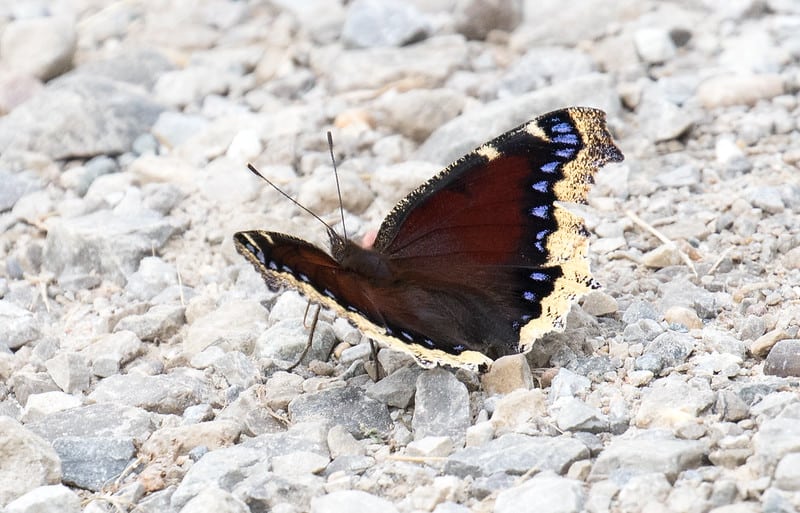
Main Characteristics
The Mourning Cloak (Nymphalis antiopa) is a large, distinctive butterfly that belongs to the family Nymphalidae. It has a wingspan of 3 to 3.5 inches and is easily distinguishable from other butterflies due to its unique markings. The upper side of its wings are maroon-brown with bright blue submarginal spots, while the underside of its wings are yellowish-gray with dark spots and a wide cream band.
Mourning Cloaks can be found in many different habitats across North America and Eurasia, typically emerge in early spring and can be seen until early fall. They overwinter as adults in sheltered areas such as tree bark crevices or under rocks.
Mourning Cloaks are among the longest-lived butterfly species in Alabama; they can live up to 11 months.
| Binomial Name | Nymphalis antiopa |
| Family | Nymphalidae |
| Wingspan | 3 to 3.5 inches |
| Habitat | woodlands, meadows, parks, gardens, and wetlands |
| Host Plant | willows, elms, hackberries, birches, poplars and cottonwoods |
Viceroy (Limenitis archippus)

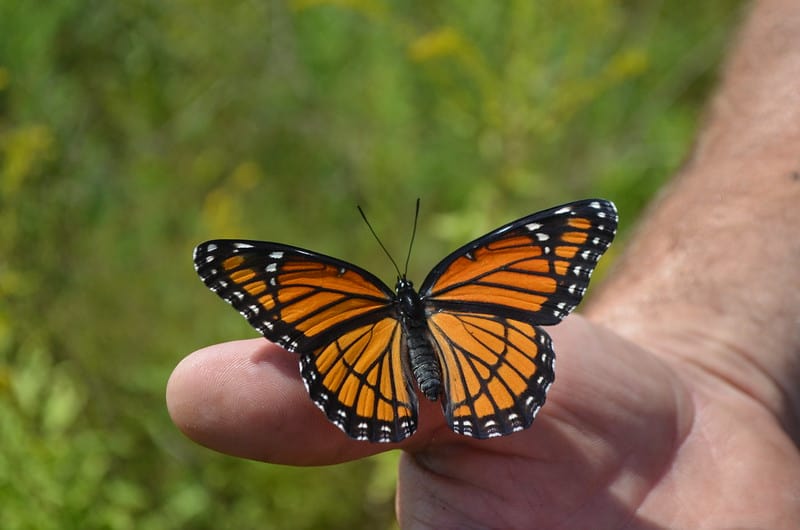
Main Characteristics
With its recognizable orange and black wings, Viceroy is a species of butterfly that can be found in North America. This family of butterflies stands out with their vibrant colors, distinct patterns, and lengthy migrations as they look for sustenance and security. Witnessing the majestic beauty of these creatures flutter through the air has to be seen to be believed!
Although they are often mistaken, Viceroy and Monarch butterflies have distinct differences in their physical characteristics. Both belong to the Nymphalidae family but feature different wing patterns – while Monarchs have an all-orange pattern with small black spots, Viceroys show orange and black designs on their wings.
One fundamental contrast between the Monarch and Viceroy is evident in the white band on the forewing of a Viceroy. Moreover, not only can size distinguish them; typically, a Viceroys wingspan measures 2-3 inches as opposed to Monarchs who have an average span of 4 inches.
| Binomial Name | Limenitis archippus |
| Family | Nymphalidae |
| Wingspan | 2 to 3 inches |
| Habitat | open woodlands, meadows, and fields. |
| Host Plant | willow tree, clover and milkweed |
Red admiral (Vanessa atalanta)
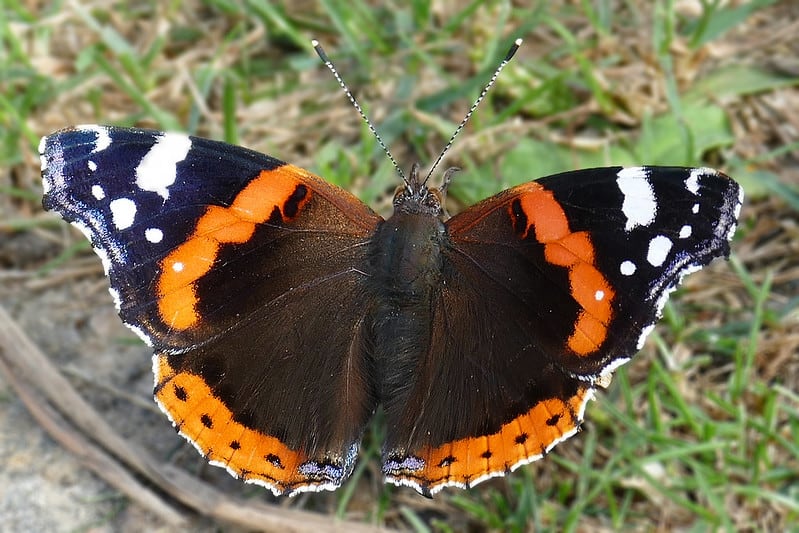
Main Characteristics
The Red Admiral butterfly is truly a sight to behold. Its wings boast an exquisite mosaic of colors, featuring stunning orange-red and black patters on the upper side with white spots outlined in pitch-black. On its underside lies a canvas of cream hued accents edged by delicate white markings. This beauty has a furry ebony body adorned with bright yellow eyespots that add even more vibrancy when it spreads its magnificent wings!
Measuring two to three inches in length, the Red Admiral butterfly is a moderate-sized insect that migrates seasonally. During spring and fall you can observe them traveling across Europe and parts Asia. Amazingly enough, during winter they migrate even farther south to North Africa or as far away as Central America!
| Binomial Name | Vanessa atalanta |
| Family | Nymphalidae |
| Wingspan | 2.75 to 3 inches |
| Habitat | gardens, meadows, woodlands, and other open habitats |
| Host Plant | nettles, hops, hollyhock, and false nettle |
Common Buckeye (Junonia coenia)
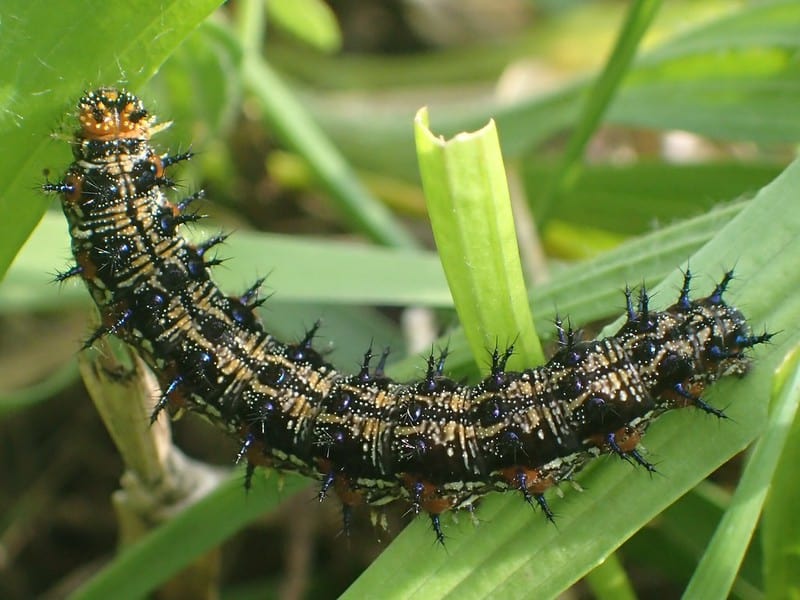

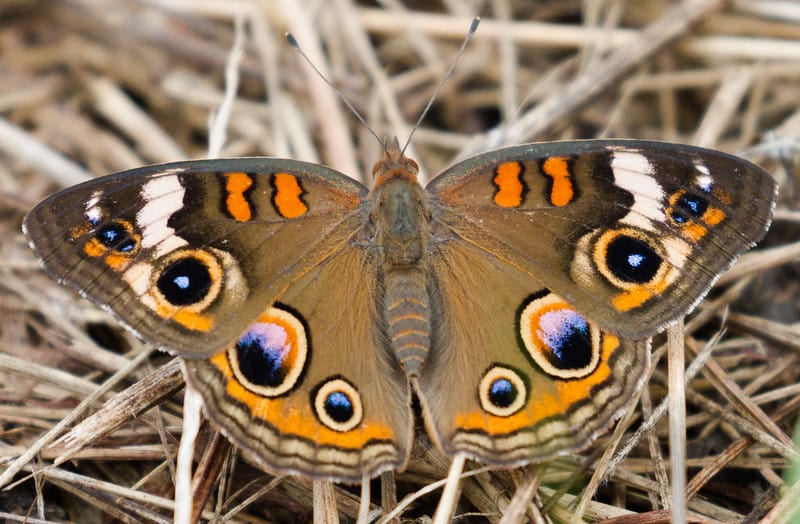
Main Characteristics
The breathtakingly gorgeous Common Buckeye Butterfly (Junonia coenia) graces the atmosphere in parts of Mexico and the United States, with its numbers reaching remarkable levels.
On the upper wings of this species, you’ll find mostly brown pigment with two bright orange bars and two large black eyespots outlined in a vibrant hue. On the underside of the hindwing, there is an array of white crescents trimming its edge. When it comes to reproduction, these creatures lay ribbed green eggs individually on host plants like plantains, snapdragons or violets – all relatively small in size compared to that of other butterfly eggs.
| Binomial Name | Junonia coenia |
| Family | family Nymphalidae and subfamily Nymphalinae |
| Wingspan | 1.5 to 2.5 inches |
| Habitat | open sunny areas and intermittent patches of ground |
| Host Plant | snapdragon, gerardia, false foxglove, monkey flowers, plantains, ruellia |
Gulf Fritillary (Agraulis Vanillae)

Main Characteristics
The Gulf Fritillary butterfly has a striking appearance and features a bright, orange upper wings with silver undersides which resembles scales. Its long antennae are black in color and project forward from its head. Its abdomen is typically yellow-orange in color and it has four legs. The butterfly also has two pairs of membranous wings that are connected by a network of veins. When closed, the wings form an oval shape and display the distinctive silver pattern on their underside.
These butterflies migrate to warmer climates from late summer until early autumn, and then again in the springtime spanning March through May. Even so, their larvae have the capability of withstanding colder temperatures throughout the year; therefore they may be encountered anytime in some regions.
From Florida to California, and even as far north as Illinois, the beautiful Gulf Fritillary butterfly can be seen gliding through backyards gardens, open fields, roadsides – you name it! These majestic creatures have become a common fixture in many urban areas too.
| Binomial Name | Agraulis Vanillae |
| Family | Nymphalidae (brush-footed butterflies) |
| Wingspan | 2.5 to 3.75 inches |
| Habitat | open, sunny areas such as parks, woodland edges, roadsides, fields and urban gardens |
| Host Plant | Purple passionflower, Passiflora incarnata L. (Passifloracaea) |
American Lady (Vanessa virginiensis)

Main Characteristics
Adorned with an enthralling display of colors, the American Lady butterfly (Vanessa virginiensis) is every nature enthusiast’s dream come true! Boasting enchanting orange and black wings patterned in white markings, accompanied by beautiful brown and white hindwings; this majestic species belongs to the Nymphalidae family, stretching across North America.
Each year, the American Lady butterfly embarks on a spectacular journey across vast distances. These remarkable creatures can be found fluttering between southern Canada to northern South America and beyond – they’ve even been seen in Europe, Hawaii, and other remote regions! During summer months their long-distance migrations are an awe-inspiring sight to behold.
| Binomial Name | Vanessa virginiensis |
| Family | Nymphalidae |
| Wingspan | 1.75 to 2.75 inches |
| Habitat | open areas such as meadows, fields, and gardens |
| Host Plant | Asteraceae plants such as thistles, sunflowers, and clovers |
Question Mark (Polygonia interrogationis)
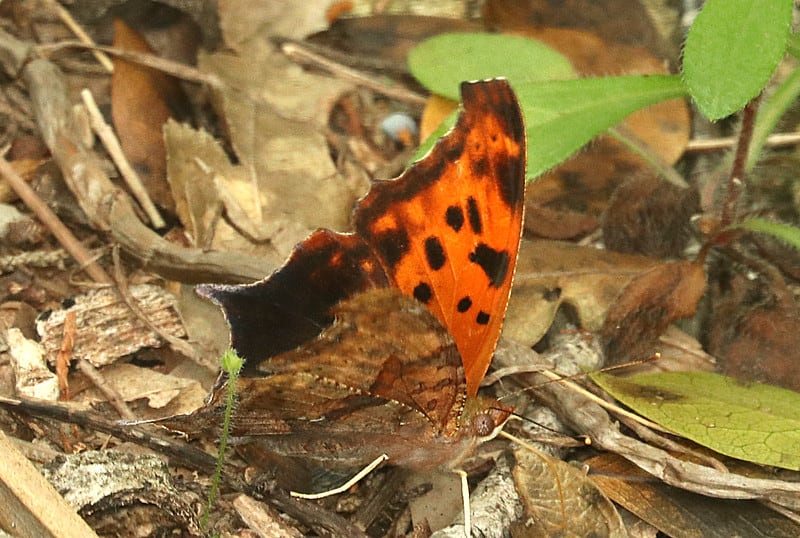
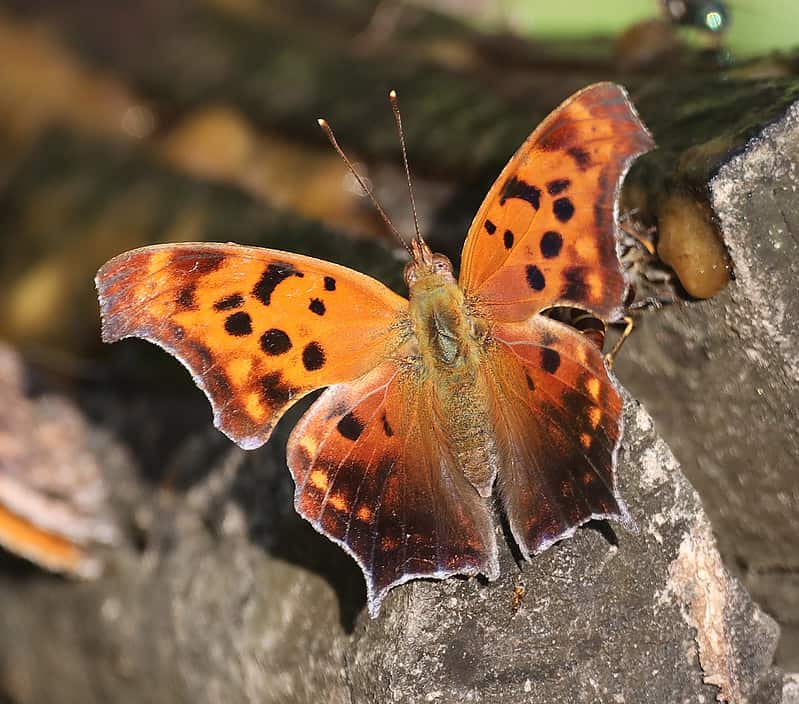
Main Characteristics
The question mark butterfly, Polygonia interrogationis (Fabricius), is a common, medium-sized butterfly of wooded areas and suburbs. It has an extensive range of distribution throughout most of North America. The wingspan of the question mark butterfly ranges from 2.25 to 3 inches.
Its upperside is red-orange with black spots while its forewing is hooked, giving it its name. The underside is light brown and the hindwing has a pearly white question mark in the center. It also has short tails-like projections on its wings.
Question mark butterflies are active during the day and can be seen flying around flowers or mud puddles in search for nectar or minerals. They are one of the earliest flying butterflies in spring and can be seen until late fall when they migrate south for winter.
| Binomial Name | Polygonia interrogationis |
| Family | Nymphalidae |
| Wingspan | 2.25 to 3 inches |
| Habitat | open woodlands, fields, gardens, and other areas with plenty of vegetation |
| Host Plant | Elm trees or nettles |
Clouded Sulphur (Colias philodice)

Main Characteristics
The Clouded Sulphur butterfly (Colias philodice) is a North American insect boasting vibrant yellow wings with a black outline on the upper surface and white speckles underneath. This medium-sized species of butterfly is truly breathtaking, especially when viewed up close!
From spring to autumn, you can spot the Clouded Sulphur butterfly flitting around grassy fields with an energetic and exploratory flight. In Wisconsin this species is one of the last to take flight during summertime, while in upstate New York it stays airborne from late March until December.
| Binomial Name | Colias philodice |
| Family | Pieridae, subfamily Coliadinae |
| Wingspan | 1.5 inches to 2.5 inches |
| Habitat | meadows, fields, lawns and gardens |
| Host Plant | clovers, vetches, alfalfa and other legumes |
Recent Posts
How Can I Create A Habitat For Skipper Butterflies In My Garden With 3 Easy Plants
Skipper butterflies are a diverse group of insects that are found all over the world. They are known for their quick, darting flight and their often colorful wings. Skippers are attracted to...
Common Species Of Butterflies In Maryland: 21 Unique Species
Maryland is home to a variety of beautiful butterflies, from the large and showy Eastern Tiger Swallowtail to the tiny and delicate Blue Dasher. There are over 150 species of butterflies in Maryland,...
